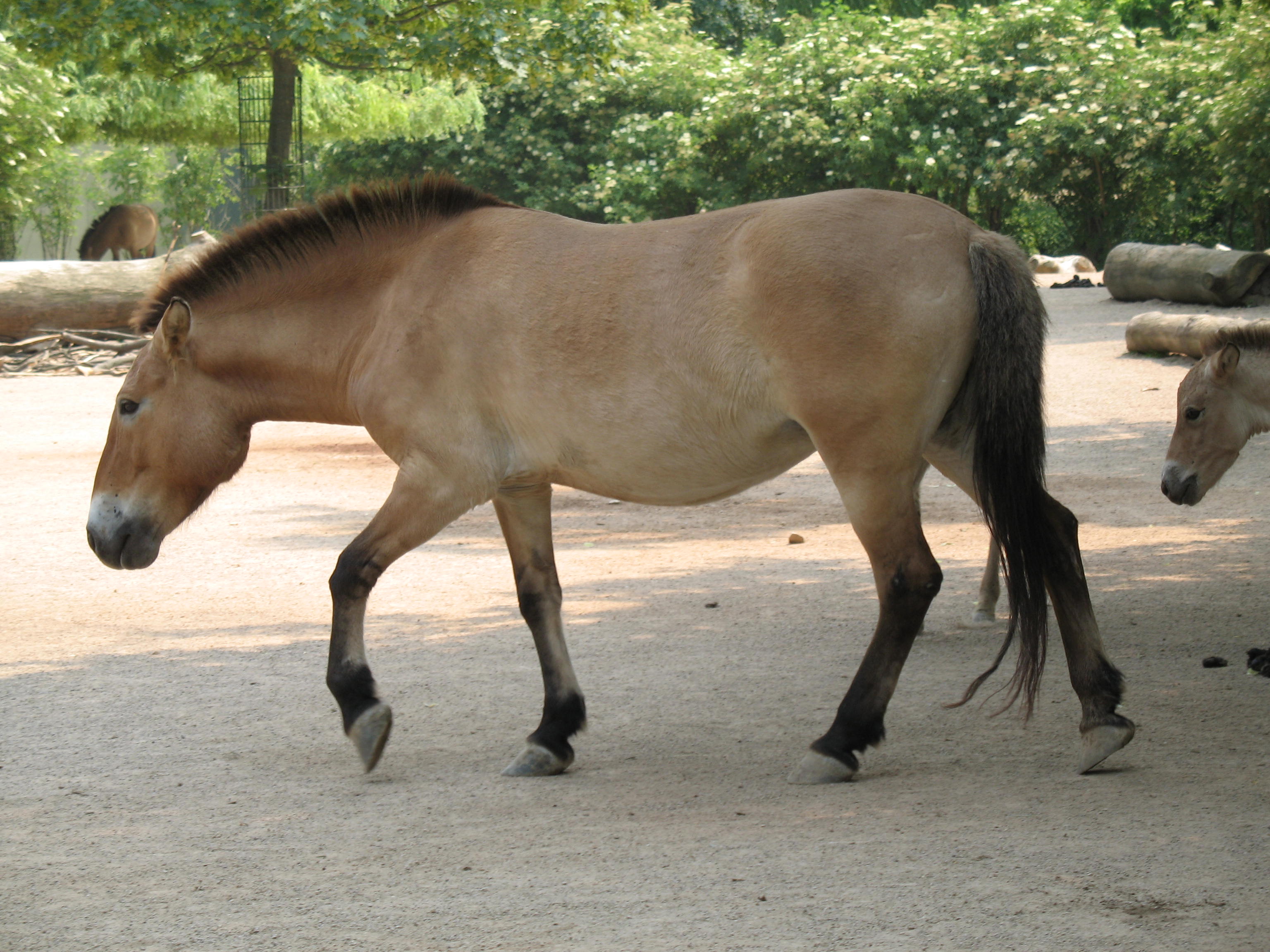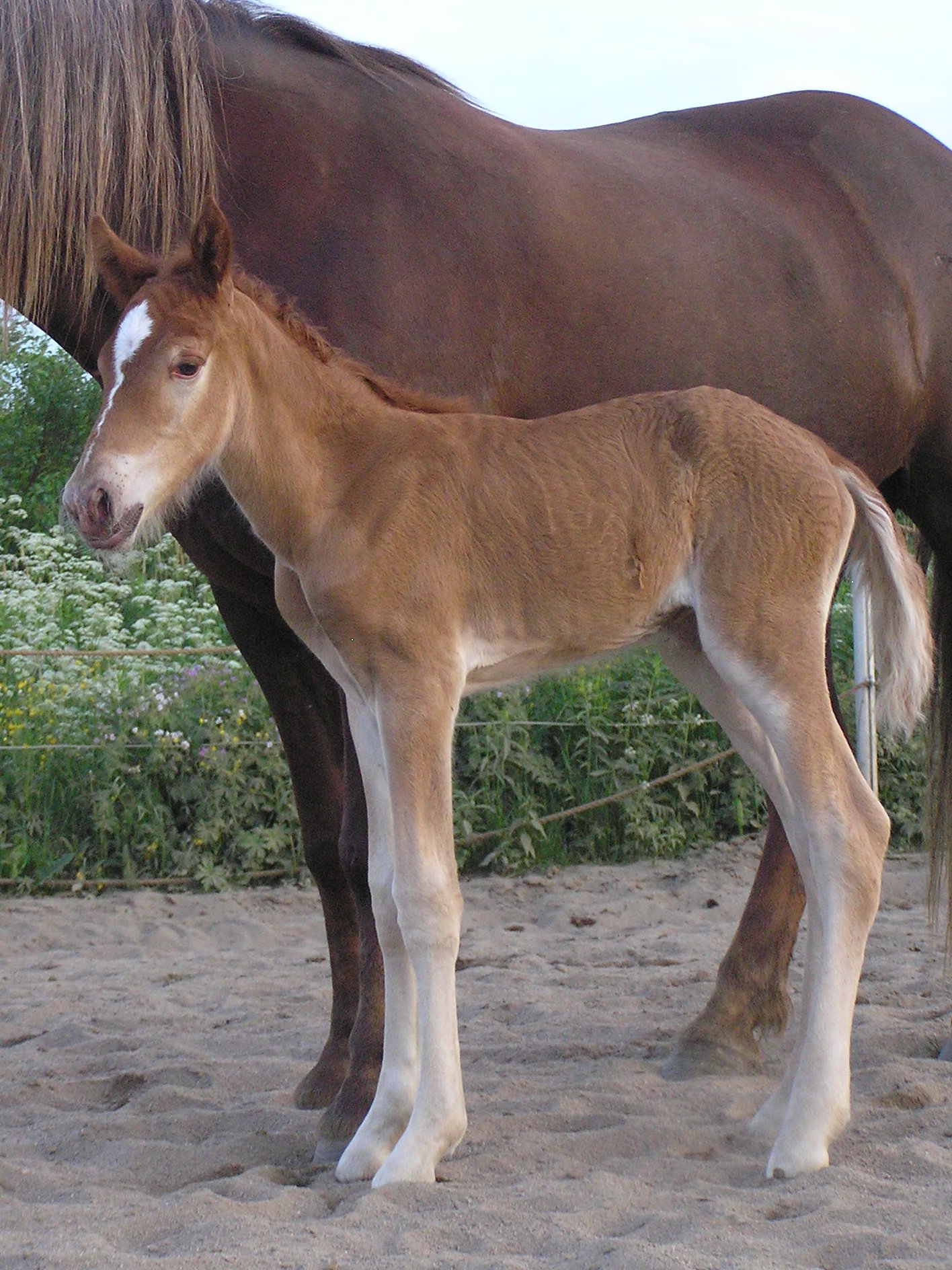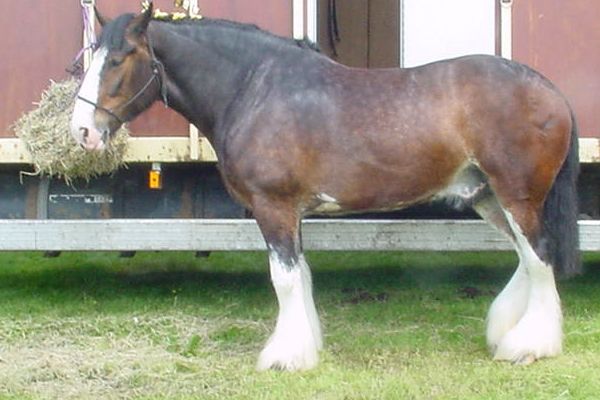|
Konik
The Konik or Polish Konik, , is a Polish list of horse breeds, breed of small horse or pony. There are semi-feral populations in some regions. They are usually dun gene, mouse dun or primitive markings, striped dun. The Bilgoray, , of south-eastern Poland is a sub-type of the breed influenced by Arab horse, Arab and Thoroughbred blood; it is close to extinction. The extinct Sweyki or Schweike sub-type of East Prussia contributed to the development of the Trakehner. The word "konik" means 'small horse'. It may be used in a wider sense to describe the Polish Konik and other similar breeds, among them the Hucul pony of the Carpathian Mountains, the Polesian (horse), Polesian of Belarus and the Žemaitukas of Lithuania. Etymology The Polish word ''konik'' (plural ''koniki'') is the diminutive of ''koń'', the Polish word for "horse" (sometimes confused with ''kuc, kucyk'' meaning "pony"). It means 'small horse'. History The Konik is a Polish horse breed descending from v ... [...More Info...] [...Related Items...] OR: [Wikipedia] [Google] [Baidu] |
Tarpan
The tarpan (''Equus ferus ferus'') was a free-ranging horse population of the Eurasian steppe from the 18th to the 20th century. What qualifies as a tarpan is subject to debate; it is unclear whether tarpans were genuine wild horses, feral domestic horses or hybrids. The last individual believed to be a tarpan died in captivity in the Russian Empire in 1909. Beginning in the 1930s, several attempts were made to develop horses that looked like tarpans through selective breeding, called "breeding back" by advocates. The breeds that resulted included the Heck horse, the , and a derivation of the Konik breed, all of which have a primitive appearance, particularly in having the grullo coat colour. Some of these horses are now commercially promoted as "tarpans", although such animals are only domestic breeds and not the wild animal themselves. Name and etymology The name "tarpan" or "tarpani" derives from a Turkic languages, Turkic language (Kazakh language, Kazakh or Kyrgyz language, ... [...More Info...] [...Related Items...] OR: [Wikipedia] [Google] [Baidu] |
Primitive Markings
Primitive markings are a group of equine coat color, hair coat markings and qualities seen in several equine species, including horses, donkey, donkeys, and asses. In horses, they are associated with primitive breeds, though not limited to such breeds. The markings are particularly associated with the Dun gene, dun coat color family. All dun horses possess at least the Dorsal (anatomy), dorsal stripe, but the presence of the other primitive markings varies. Other common markings may include horizontal striping on the legs, transverse striping across the shoulders, and lighter guard hairs along the edges of a dark mane and tail. Origin The dun coat and attendant primitive or "dun factor" markings reflect the wild type coat and are observed in all Equus (genus), equine species. Some cave paintings depict horses as being dun and with the primitive markings. The Przewalski's horse is dun-colored with primitive markings. So, too, are horse breeds such as the Konik and the Heck hors ... [...More Info...] [...Related Items...] OR: [Wikipedia] [Google] [Baidu] |
Dun Gene
The dun gene is a dilution gene that affects both red and black pigments in the equine coat color, coat color of a horse. The dun gene lightens most of the body while leaving the mane (horse), mane, tail, legs, and primitive markings the shade of the undiluted base coat color. A dun horse always has a dark dorsal stripe down the middle of its back, usually has a darker face and legs, and may have transverse striping across the shoulders or horizontal striping on the back of the forelegs. Body color depends on the underlying equine coat color genetics, coat color genetics. A classic "bay dun" is a gray-gold or tan, characterized by a body color ranging from sandy yellow to reddish brown. Duns with a chestnut (horse color), chestnut base may appear a light tan shade, and those with black horse, black base coloration are a smoky gray. Manes, tails, primitive markings, and other dark areas are usually the shade of the undiluted base coat color. The dun gene may interact with all other ... [...More Info...] [...Related Items...] OR: [Wikipedia] [Google] [Baidu] |
Žemaitukas
The Žemaitukas (plural: Žemaitukai, literally: ''little Samogitians, Samogitian'') is a historic horse breed from Lithuania. It may be classified as a pony, due to its relatively short stature (between 131–141 centimeters at the withers). Known from the 6–7th centuries, it was used as a war horse by the Lithuanians during the Northern Crusades and is hailed in Lithuania as part of the state's historic heritage. Its origin is uncertain; it is related to the Estonian Native and the Konik. The breed contributed to the foundation of the Trakehner. Once popular, the breed was brought to the brink of extinction by changing agricultural demands and World War II. As of 2010, the total population is estimated at 400 individuals. History Known in written sources since the 6–7th centuries, the Žemaitukas became famous as an excellent war horse during the Northern Crusades. During the centuries, the breed was influenced by Tatar, Russian, light Polish, and other horses. Once wid ... [...More Info...] [...Related Items...] OR: [Wikipedia] [Google] [Baidu] |
Wild Horse
The wild horse (''Equus ferus'') is a species of the genus Equus (genus), ''Equus'', which includes as subspecies the modern domestication of the horse, domesticated horse (''Equus ferus caballus'') as well as the Endangered species, endangered Przewalski's horse (''Equus ferus przewalskii'', sometimes treated as a separate species i.e. ''Equus przewalskii''). The European wild horse, also known as the tarpan, that went extinct in the late 19th or early 20th century has previously been treated as the nominate subspecies of wild horse, ''Equus ferus ferus'', but more recent studies have cast doubt on whether tarpans were truly wild or if they actually were feral horses or hybrids.Tadeusz Jezierski, Zbigniew Jaworski: ''Das Polnische Konik. Die Neue Brehm-Bücherei Bd. 658'', Westarp Wissenschaften, Hohenwarsleben 2008, Other subspecies of ''Equus ferus'' may have existed and could have been the stock from which domesticated horses are descended. Przewalski's horse had reached t ... [...More Info...] [...Related Items...] OR: [Wikipedia] [Google] [Baidu] |
List Of Horse Breeds
The following list of horse and pony horse breed, breeds includes standardized breeds, some strains within breeds that are considered distinct populations, types of horses with common characteristics that are not necessarily standardized breeds but are sometimes described as such, and terms that describe groupings of several breeds with similar characteristics. While there is no single definition of the term "breed", it can be defined as a population sharing common ancestry, which has been subjected to similar selection objectives, and which conforms to certain established “breed standards”. Its members may be called ''purebred''. In most cases, bloodlines of horse breeds are recorded with a breed registry. The concept is somewhat flexible in horses, as open stud books are created for recording pedigrees of horse breeds that are not yet fully true-breeding. Registries are considered the authority as to whether a given breed is listed as a "horse" or a "pony". There are also a ... [...More Info...] [...Related Items...] OR: [Wikipedia] [Google] [Baidu] |
Hucul Pony
The Hucul or Carpathian is a pony or small horse list of horse breeds, breed originally from the Carpathian Mountains. It has a heavy build and possesses great endurance and hardiness. The breed is also referred to as the Carpathian pony, Huculska, Hutsul, Huțul, Huțan or Huzul. The breed gets its name from the Hutsuls, Hutsul people, who live mostly in the Carpathians in Ukraine and in Romania, but also in an area in the East Carpathian Mountains north of the river Bistrița River (Siret), Bistritz, officially named “Huzelei”. Characteristics Hucul ponies are usually calm with a good disposition, and are used for both trail riding, hacking and pulling timber in otherwise inaccessible forested areas. They are usually bay (horse), bay, black (horse), black, chestnut (coat), chestnut, or the grullo variation of dun gene, dun, with a dorsal stripe and zebra stripes on the legs characteristic of the breed. Their equine conformation, conformation traits include a short head wi ... [...More Info...] [...Related Items...] OR: [Wikipedia] [Google] [Baidu] |
Black Horse
Black is a hair coat color of horses in which the entire hair coat is black. It is not uncommon to mistake dark chestnuts or bays for black. Black horses have dark brown eyes, black skin, and wholly black hair coats without any areas of permanently reddish or brownish hair. They may have pink skin beneath any white markings under the areas of white hair, and if such white markings include one or both eyes, the eyes may be blue. Many black horses "sun bleach" with exposure to the elements and sweat, and therefore their coats may lose some of their rich black character and may even resemble bay or seal brown, though examination of the color of hair around the eyes, muzzle and genitals will determine color. Some breeds of horses, such as the Friesian horse, Murgese and Ariegeois (or Merens), are almost exclusively black. Black is also common in the Fell pony, Dales pony, Ostfriesen and Alt-Oldenburger, Kladruber, and Groningen. Visual identification When identifying t ... [...More Info...] [...Related Items...] OR: [Wikipedia] [Google] [Baidu] |
Chestnut (horse Color)
Chestnut is a hair coat color of horses consisting of a reddish-to-brown coat with a mane and tail the same or lighter in color than the coat. Chestnut is characterized by the absolute absence of true black hairs. It is one of the most common horse coat colors, seen in almost every breed of horse. Chestnut is a very common coat color but the wide range of shades can cause confusion. The lightest chestnuts may be mistaken for palominos, while the darkest shades can be so dark they appear black. Chestnuts have dark brown eyes and black skin, and typically are some shade of red or reddish brown. The mane, tail, and legs may be lighter or darker than the body coat, but unlike the bay they are never truly black. Like any other color of horse, chestnuts may have pink skin with white hair where there are white markings, and if such white markings include one or both eyes, the eyes may be blue. Chestnut foals may be born with pinkish skin, which darkens shortly afterwards. Chestnu ... [...More Info...] [...Related Items...] OR: [Wikipedia] [Google] [Baidu] |
Foundation Stock
Foundation stock or foundation bloodstock refers to animals that are the progenitors, or foundation, of a breed or of a given bloodline within such. Many modern breeds can be traced to specific, named foundation animals, but a group of animals may be referred to collectively as foundation bloodstock when one distinct population (including both landrace breeds or a group of animals linked to a deliberate and specific selective breeding program) provides part of the underlying genetic base for a new distinct population. Terminology The terms for foundation ancestors differ by sex, most commonly "foundation sire" for the father and "foundation dam" for the mother. Depending upon the species in question, more specialized terms may be used, such as ''foundation mare'' for female horses, ''foundation queen'' for female cats, or ''foundation bitch'' for female dogs. The offspring of genetically dissimilar parents or stock, whether of different species or different breeds are technically ... [...More Info...] [...Related Items...] OR: [Wikipedia] [Google] [Baidu] |
Draft Horse
A draft horse (US) or draught horse (UK), also known as dray horse, carthorse, work horse or heavy horse, is a large horse bred to be a working animal hauling freight and doing heavy agricultural tasks such as plowing. There are a number of breeds, with varying characteristics, but all share common traits of strength, patience, and a docile temperament. While indispensable to generations of pre-industrial farmers, draft horses are used today for a multitude of purposes, including farming, draft horse showing, logging, recreation, and other uses. Draft breeds have been crossbred with light riding breeds such as the Thoroughbred to create sport horses or warmbloods. While most draft horses are used for driving, they can be ridden and some of the lighter draft breeds are capable performers under saddle. Characteristics Draft horses are recognizable by their extremely muscular build. They tend to have broad, short backs with powerful hindquarters. In general, they are t ... [...More Info...] [...Related Items...] OR: [Wikipedia] [Google] [Baidu] |
Hybrid (biology)
In biology, a hybrid is the offspring resulting from combining the qualities of two organisms of different varieties, subspecies, species or genera through sexual reproduction. Generally, it means that each cell has genetic material from two different organisms, whereas an individual where some cells are derived from a different organism is called a chimera. Hybrids are not always intermediates between their parents such as in blending inheritance (a now discredited theory in modern genetics by particulate inheritance), but can show hybrid vigor, sometimes growing larger or taller than either parent. The concept of a hybrid is interpreted differently in animal and plant breeding, where there is interest in the individual parentage. In genetics, attention is focused on the numbers of chromosomes. In taxonomy, a key question is how closely related the parent species are. Species are reproductively isolated by strong barriers to hybridization, which include genetic and morph ... [...More Info...] [...Related Items...] OR: [Wikipedia] [Google] [Baidu] |








